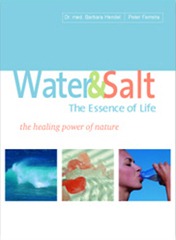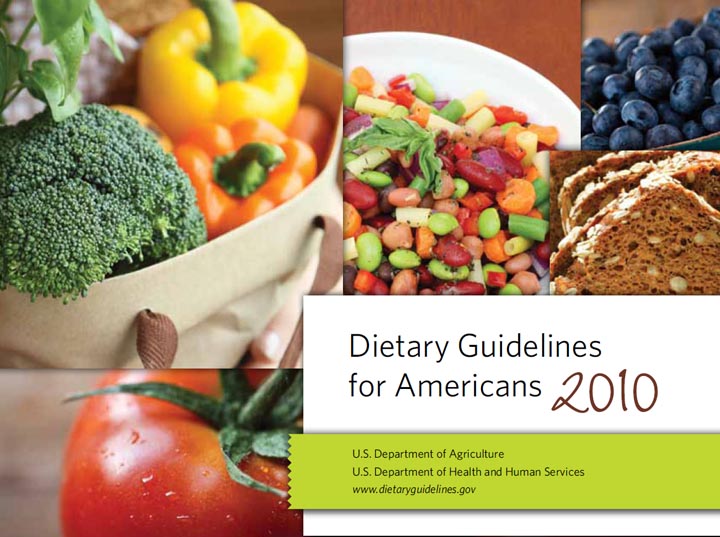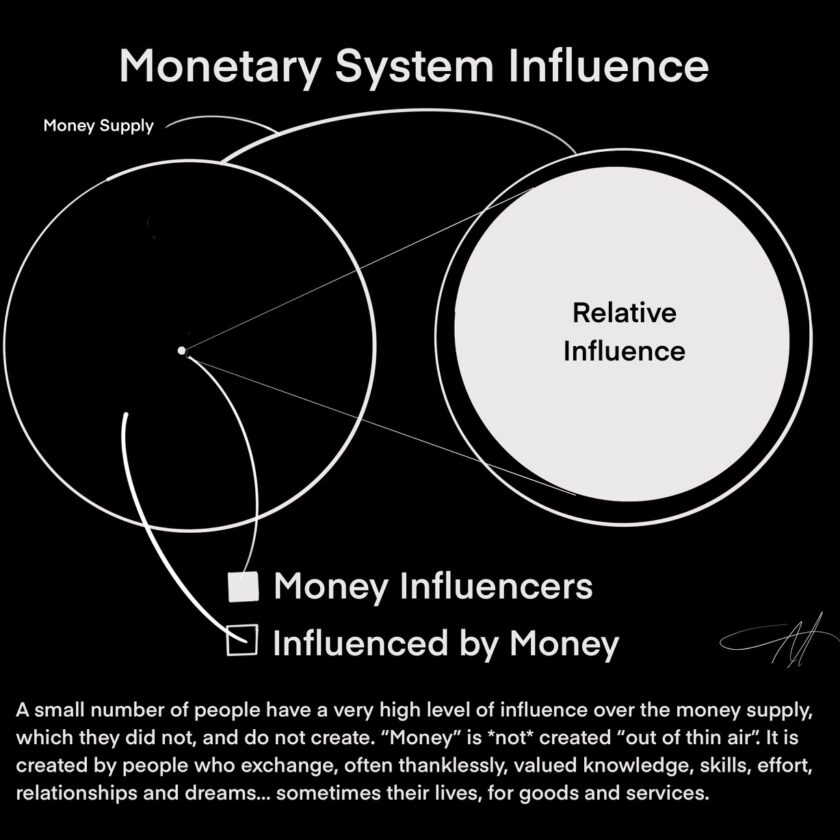
“Government guidelines” will give you the appearance of being a good idea, but in truth, following them can deliver you into an ever lowering sinkhole of infirmity and disease. New dietary guidelines published by the U.S. Department of Agriculture (USDA), and U.S. Department of Health and Human Services, are the latest case-in-point.
A 112-page document, titled, Dietary Guidelines for Americans, 2010, is compiled by a committee of Ph.D’s and other experts on diet and nutrition. However, it manages to give the public little useful information that would help a reader to truly regain, or sustain one’s health.
In the Executive Summary, the authors explain that Dietary Guideline recommendations have been traditionally intended for healthy Americans, aged 2 years and older. “However, Dietary Guidelines for Americans, 2010 is being released at a time of rising concern about the health of the American population.”
“Rising concern” indeed.
In spite of this concern, their guidelines read like previous ones, focusing on such issues as caloric intake to manage body weight, reducing the risk of food-borne illness by cooking and chilling food, and staying away from unpasteurized milk and cheeses, just to name a few.
Among the foods to reduce are:
- Sodium intake to less than 1,500 milligrams (mg). This is generally implied to mean salt.
- Consume less than 10 percent of calories from saturated fatty acids by replacing them with monounsaturated and polyunsaturated fatty acids.
- Consume less than 300 mg per day of dietary cholesterol.
- Keep trans fatty acid consumption as low as possible by limiting foods that contain synthetic sources of trans fats, such as partially hydrogenated oils, and by limiting other solid fats.
- Reduce the intake of calories from solid fats and added sugars.
- Limit the consumption of foods that contain refined grains, especially refined grain foods that contain solid fats, added sugars, and sodium.
- If alcohol is consumed, it should be consumed in moderation—up to one drink per day for women and two drinks per day for men—and only by adults of legal drinking age.
On the increase side are:
- Increase vegetable and fruit intake.
- Eat a variety of vegetables, especially dark-green and red and orange vegetables and beans and peas.
- Consume at least half of all grains as whole grains. Increase whole-grain intake by replacing refined grains with whole grains.
- Increase intake of fat-free or low-fat milk and milk products, such as milk, yogurt, cheese, or fortified soy beverages.6
- Choose a variety of protein foods, which include seafood, lean meat and poultry, eggs, beans and peas, soy products, and unsalted nuts and seeds.
- Increase the amount and variety of seafood consumed by choosing seafood in place of some meat and poultry.
- Replace protein foods that are higher in solid fats with choices that are lower in solid fats and calories and/or are sources of oils.
- Use oils to replace solid fats where possible.
- Choose foods that provide more potassium, dietary fiber, calcium, and vitamin D, which are nutrients of concern in American diets. These foods include vegetables, fruits, whole grains, and milk and milk products.
Now, that is government thinking at its best. The remaining 100 or so pages explains what they mean in greater depth.
The end result is that all of this “advice” only gets the reader more of the same, which will result, in another five years, in an update in the Guidelines, which will say that the situation is even more acute, because not enough people listened to the previous one.
I’ll mention a couple of areas needing change that fly in the face of what the government thinks is best.
Cut Back On Salt? Get Real!
First of all, they say to dial one’s salt (sodium) intake back. Doing so would only slow down the rate of increase in one’s metabolic imbalance, and eventually, disease, because the white substance that most people have at home, and are in virtually all restaurants and used to prepare foods, is not real salt. The proportions of sodium chloride that Americans consume are far more than is natural, needed, or beneficial. Reducing the intake of what amounts to, metabolically speaking, a poison still means consuming a poison.
 In the book Water & Salt: The Essence of Life, is a section titled, “White Gold to White Poison,” where the authors, biophysicist Peter Ferriera and Dr. Barbara Hendel, explain how the trace minerals in natural salt were “chemically cleaned,” which resulted in the base elements of sodium and chloride (along with a few “necessary” elements), which make up 97% of crystallized salt. They conclude:
In the book Water & Salt: The Essence of Life, is a section titled, “White Gold to White Poison,” where the authors, biophysicist Peter Ferriera and Dr. Barbara Hendel, explain how the trace minerals in natural salt were “chemically cleaned,” which resulted in the base elements of sodium and chloride (along with a few “necessary” elements), which make up 97% of crystallized salt. They conclude:
However, sodium chloride is an unnatural, isolated, unwholesome substance having nothing in common with salt.
The authors go on to say that while the human body only requires about 0.007 ounces of salt per day (about 200 mg), most people still suffer from a lack of enough salt, even though they are over-saturated with sodium chloride.
The new government guidelines don’t help. 1,500 milligrams of sodium chloride still amounts to 0.053 ounces, or 7.5 times more than is needed. Current intake levels, of 0.4 to 0.7 ounces, equates to 11,339 to 19,845 milligrams respectively, or 57 to 99 times more than the body requires. Imagine just some of the potential consequences of following this same habit day in and day out, year in, and year out. It’s actually quite easy to imagine, because the very health statistics that the Guidelines warn against are happening right now!
We’re looking at the enemy, but its so familiar and so accepted, that we’re hard-pressed to see how we can be the problem. It’s easier to fight the diseases, but the problem is not the diseases, but our habits that have to change. When our habits change, so will our health.
Food product producers aren’t going to change on their own, since they must comply with guidelines set by government officials, who won’t change until they count more deaths, or even face their own when illness knocks on the door, before they’re willing to admit that we’ve been on the wrong track.
Doctors and other health care personnel aren’t any better, since they are the first to whip out the prescription pad and suggest the latest whiz-bang drug when another poisoned citizen comes knocking. In the meantime the pathogens and pathologies have a field day on our energy and mineral depleted bodies.
Our schools aren’t helping either. The teachers are teaching students what they have been taught and graded for, which is just what the various industry lobbies want them and the public to know. So to the entire lot, the threat may really appear to be real.
What the government people don’t tell you is that the body requires that 3-percent of trace minerals (over 80 of them) that are processed out of real salt. Their new guideline doesn’t address this issue whatsoever.
There are others… such as the slam against unpasteurized milk. Pasteurizing and homogenizing milk is another contributor to the inevitable onset of disease, but you’d never guess it by reading this document. The body needs three things that raw, unpasteurized mild delivers; they are:
- aerobic bacteria (let’s let go of the “good bacteria” / “bad bacteria” terminology),
- digestive enzymes, and
- real vitamin D
You won’t find any of these life-giving components in the beverage that masquerades as milk in the grocery store. And yet, the committee of advisors all seem to believe that the “risks” of raw milk outweigh the reality of the real cost that people, including our children, are paying for the compromised metabolic functionality that they being exposed to each day, week, month, and year by consuming pasteurized dairy products.
They’re not even content with pasteurization being the dominant way of producing dairy products. They want you to believe that unpasteurized products are potentially harmful, so harmful in fact that some states even have enacted laws against its production.
A whole lot of back tracking is going to have to be done to undo the thinking that we have become mired in.
If you read the Guideline, you’d never imagine that artificial colors, flavors, preservatives, genetic modification, pesticides, herbicides, and other chemical chicanery, are being done to the food supply, affecting even that which is considered “organic.” If food is being produced on a large-scale and delivered to mass consumer outlets, it is most likely not in an optimal state.
And with the FDA set to approve the unleashing of genetically modified alfalfa, we have more “fit” getting ready to hit the “shan.” There’s time to put a halt to that before it gets started, but it’s going to require more than a short read; it’s going to take some form of action, even if it simply means letting your opinion be heard before the fact, rather than complaining about it afterwards.
We’re a generation or two that have become disconnected from the soil, leaving others to do the work and deliver it to us, trusting that they know, and are doing what is best. However, the “food” that we routinely consume has been so adulterated, processed, dumbed, and dimmed down, that no amount of dietary adjusting, along the lines of the USDA Guideline, is going to result in increases in health, or decreases in disease.
The industrial salt product that is sold to consumers, and given in hospitals, should be banned. Let’s start there. It is not fit for human consumption; not for our children, not for us, not for the elderly, and certainly not for the chronically ill.
In its place should be full-spectrum, crystalline salt. Sea salt is better than the “bleached” stuff that we’re used to (that’s funny, given how many MMS critics referred to it as bleach).
The best salt product appears to be Himalayan, primarily because it contains all the minerals that the human body needs, and in proper proportion. Proportion is an important aspect of balance that appears lost to the calorie crunchers these days. However, being unadulterated, meaning not “corrected” through, or by industrialized technological process, appears to be the best.
One example of how true crystalline salt intake can affect all the negative and depressing numbers that the government watchdogs throw in front of the public in order to get support for their policies, is with blood pressure. According to the Guidelines, over 74 million Americans have high blood pressure (hypertension), which is a gateway condition for heart disease, stroke, congestive heart failure, kidney disease, and more. Another 75 million have what they refer to as pre-hypertension. This is virtually half the population of the United States.
In controlled clinical studies, two groups, one exhibiting high blood pressure, and the other, low blood pressure, were both given crystalline salt, dissolved in water to create a solution called, solé (so-lay). After a short time on this regimen, which involved taking only a teaspoon daily (diluted in a glass or drinking bottle of water), both groups experienced a normalization of their blood pressure into a healthy range.
The USDA/Dept. Health & Human Services Guidelines provide no suggestions, no methods, regimens or strategies that would bring about such results. There are many who will dutifully follow these guidelines. However, this is another reason why it’s time to know for yourself, what is right, best, and true for you.






Hi Phaelosopher.
If the FDA approve the genetically modified alfalfa, we may not be able to buy alfalfa honey. Someone told me, that the bees get confused from genetically modified plants and they die. I m not sure if this information is correct, or not, but something is killing the bees in a lot of places.
But even if the genetically modified alfalfa would not kill the bees, I think the alfalfa honey will not be the same, it will not have the same energy.
What’s an alternative way to get crystalline salt if Himalayan salt in unavailable for you?
Hi Maria,
Are you sure that it’s not available in Greece? If it is not, then *unprocessed* sea salt will likely be a good alternative.